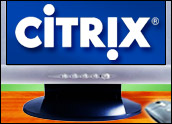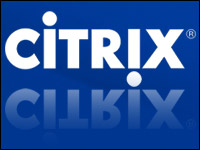
The economy is still broken, and businesses are scampering to savemoney and entice back lost customers. Don’t remind Brett Caine, though. As president of Citrix Online, he’s too busy growing thecompany’s customer base into aUS$100 million business that a few years ago didn’t exist.
As a young startup in 1997, Expertcity was a provider of Web-baseddesktop access and help-desk services. It was started by a college professorand two of his PhD students. Expertcity offered online products, including the GoToMyPC software service for browser-basedaccess to desktop PCs and the GoToAssist software service, an onlinehelp-desk and call-center assistance system.
Toward the end of 2003, Citrix Systems acquired Expertcity for US$225million in cash and stock, forming Citrix Online. The two PhD studentswho helped found Expertcity came on board. Today, Bernd OliverChristiansen serves as vice president and chief technology officer,and Malte Muenke serves as vice president and chief architect ofCitrix Online.
“The company survived the dot-com fallout of the 1990s. A good dealof market displacement was happening. Internet companies were goingout of buisiness. Then 9/11 happened shortly after GoToMyPC launched in2001,” Caine told the E-Commerce Times.
He joined Citrix Online soon afterwards to leadthe global corporate sales division. GoToMeeting launched in 2004.
“The company was very smart in being conscious of cash and not gettingahead of our headlights. We didn’t invest in things we didn’t think wecould afford. We were very lean in areas that were unproven. Once theywere proven, then we could put the petal to the metal and moveforward. We did a lot of testing and tried not to get too big toofast,” said Caine.
A quick look at the company’s recent sales figures: Revenue grew 16 percent during the first quarter to $72 million, and it was up 22 percent from 2007 to 2008. Last year, Citrix Online brought in a fifth of the revenue for parent company Citrix.
Factoring Success
Citrix Online is capitalizing on a product pipeline thatfeatures upgrades, extensions and new releases. Its primarymarket is the SMB, but it also makes forays into the enterprise space and stabs atluring corporate customers away from the market leaders in onlinecollaborative services, Cisco and Microsoft.
“Citrix Online targets the Web conferencing market with itsGoToMeeting and GoToWebinar offerings. Our research indicates that theWeb conferencing industry grew by 17 percent in 2008, topping $1.1billion in sales. We expect the market to reach $2.7 billion in fiveyears growing at a CAGR of 19.8 percent,” Roopam Jain, principalanalyst at Frost & Sullivan, told the E-Commerce Times.
Frost & Sullivan cited the firm with an award recently, recognizing strong marketing efforts in the SMBspace, she said.
“Through the end of 2008 they outpaced competition in terms of growthrate, revenue growth and customer acquisition. I think that can all beattributed to a couple of things. First of all, their conferencingplatform itself has some strong points when you look at the needs ofthe SMB market which they are primarily addressing,” she explained.
Inside the Box
Expertcity’s founders meant to address what they saw as an absence of anyeasy-to-use screen-sharing technology. The three founders, themselvescomputer experts, traveled frequently and needed to stay in touch onprojects and share materials over the Internet.
“They got frustrated with the difficulty in doing this online while onthe road. Nothing was available for what they were trying to do,”Caine said. “The original idea was to make it easy to collaborate withuniversity labs around the globe. Sharing information across computerscreens wasn’t readily available.”
That concept, according to Caine, also fueled the online computerrepair model. With online repair, the customer sees what the technician seesand does. That idea evolved into the notion of collaborating withother computers remotely without having somebody on the other end as atechnician. All of this happens through a Web browser.
Outside the Box
Related ideas began to take hold. The company’s brain trust began to look at the broadermarket of how else screen-sharing technology could be applied tobusiness situations.
“In the 2003 time frame, my meetings services were available but werevery difficult to use and prohibitively expensive. Often, people had adifficult time getting into an online meeting and getting everybody tosee the same things on the screen at the same time. It was adifficult, time-consuming and expensive process,” explained Caine.
The solution seemed obvious — bring thesame features it used in the GoToMyPC and GoToAssistexperience to the online access experience.
“That’s when we built the online meetings for the rest of us,” he said.
Making It Work
The initial business model was developed early on at Expertcity. Thatmodel formed a community of experts around the world that could solvecomputer problems for individuals and companies.
“In order to do that, it was very difficult to create Software as a Service (SaaS), which didn’t exist yet. The technology didn’t really exist. Itwas very early on,” Caine noted.
The company had to first build all the infrastructure and then buildthe technology, the platform and, finally, the screen-sharing. Engineers hadto operate data centers and find a way to provide securecommunications infrastructures to allow people over the Internet totransmit information, much of which was strictly confidential.
“It involved their computer data being shared with somebody outsidethe firewall. We had to create the encryption technology. We had tobuild all this stuff into a system that was highly available,multi-tenant. Much of this didn’t exist previously in anInternet-centric way,” said Caine.
Expanding the Market
The meeting services are priced at a $50per month subscription for unlimited use. One of the newest offerings,GoToWebinar, costs a $100-per-month flat fee for unlimited use.
The pricing scheme is designed to appeal to companies that wanted a version of a technology usually only larger organizations could afford.
“They offer a pretty full-featured product,” said Jain. “It lacks the bells andwhistles you would see in something from the high-end vendors. This isthe main reason they have seen such huge success in the SMB market. Ithink they have a very strong footing. They have actually become apretty significant market-share holder since they entered the SMBspace. They have become the No. 3 company in the Webconferencing market behind Cisco, Webex and Microsoft Live Meeting.”
Next Horizons
Citrix Online continues to expand its product lines toinclude a number of other services.
For example, having bought a smallcompany on the East coast, Citrix Online has created a productdivision to offer an audio conference service, according to Caine.
HiDef conferencing provides virtual audio rooms for 10 to 500 people at a fixed rate with nolimit to the number of conferences. Room participants can use VoIPor regular telephone lines to join, according to Caine.
What’s Left
“Video in the future may become part of the collaboration service.Already we see a lot of video services in the market. Much of it isnot really very good. It doesn’t really enhance the collaborationexperience today and in a lot of cases it gets in the way,” notedCaine.
Drawing on one of the founding tenants of the both Expertcity andCitrix Online, the company is not rushing prematurely into videoconferencing. First, Caine wants to see how video evolves.
One of the newest product developments takes on a show-and-tellflavor. Citrix Online recently introduced a new product in beta called“GoView,” available for free now.
An all-in-one screen-sharing and audio recording service, GoView lets usersrecord screen and audio content, save it and share it. Anything youcan do on your computer you can couple with an audio overlay and share, as Caine described the concept.














































Social Media
See all Social Media